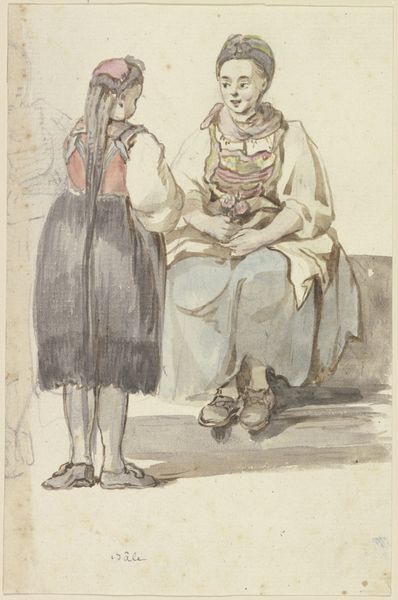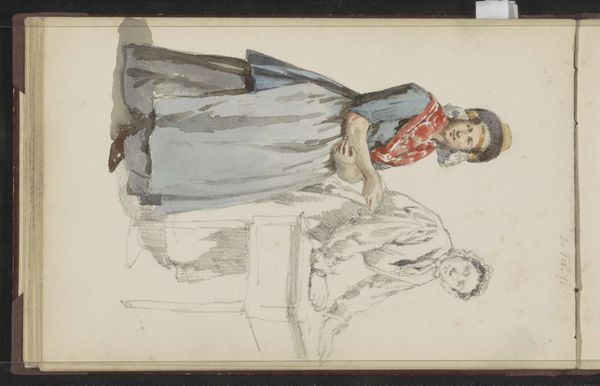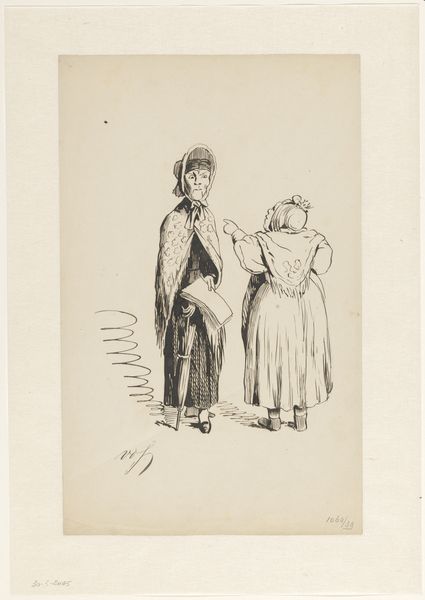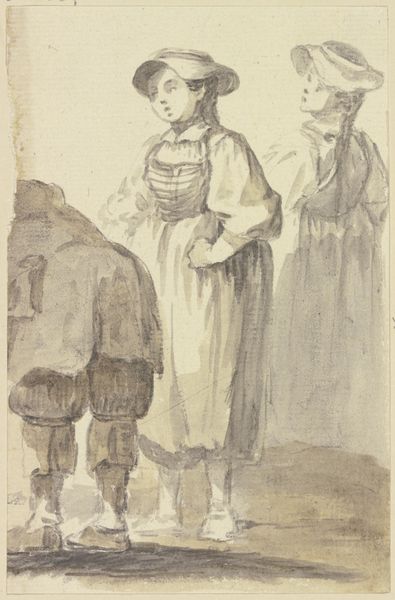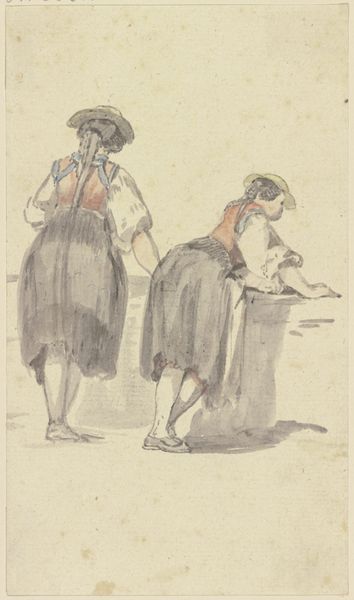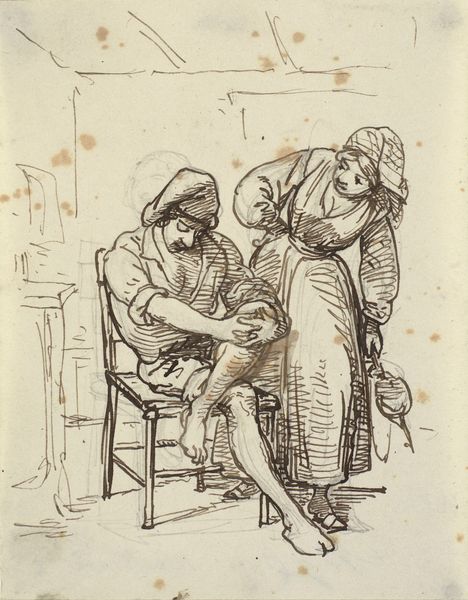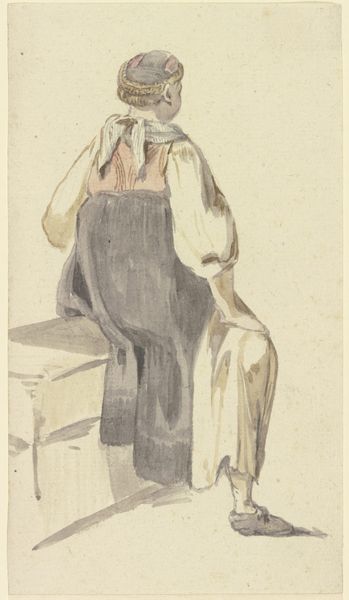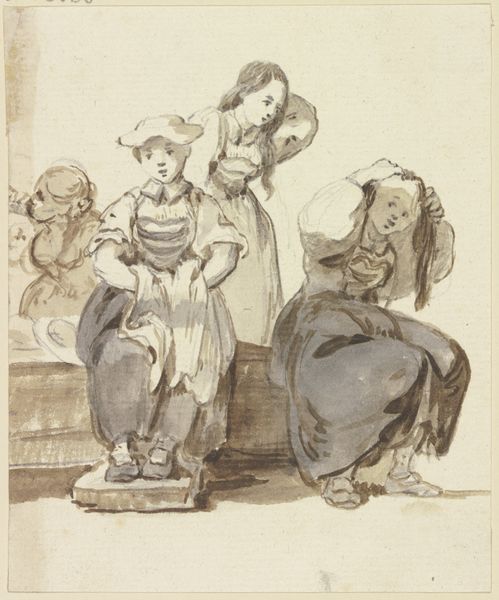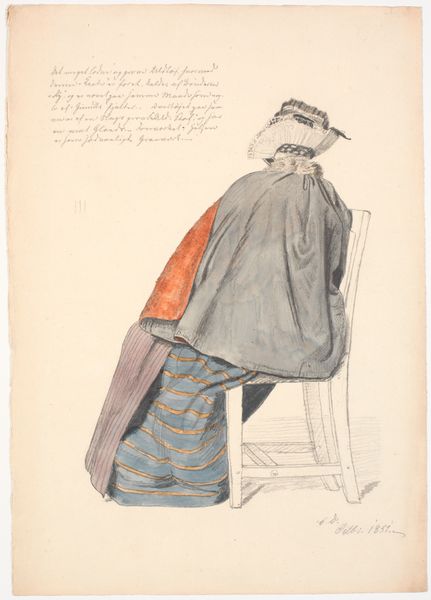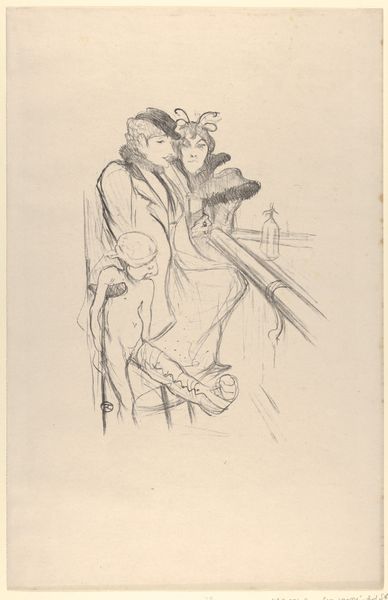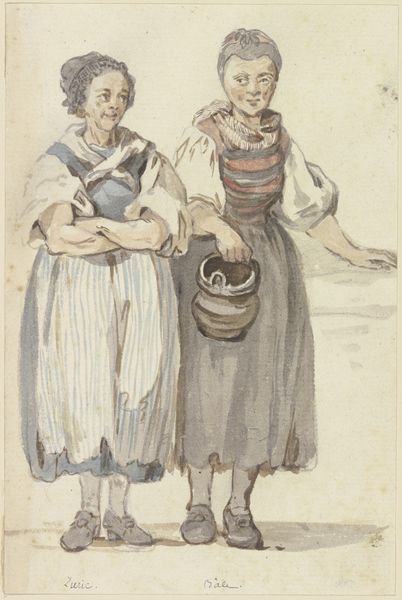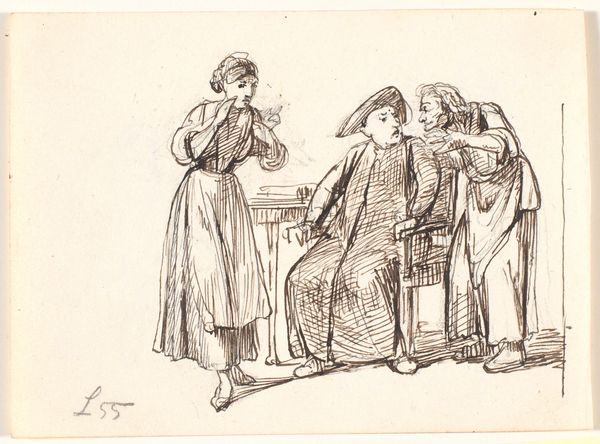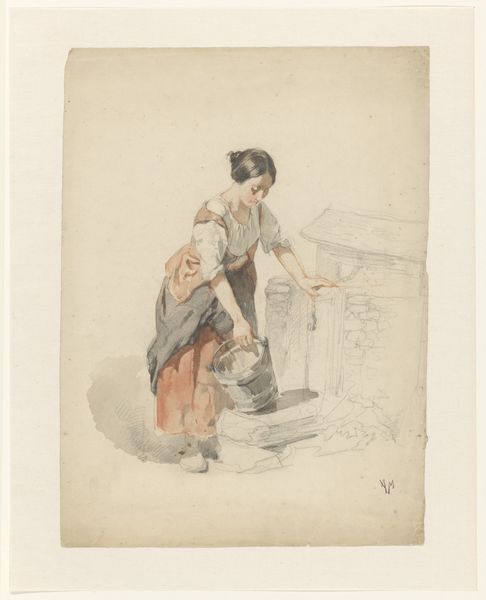
Drei nebeneinander sitzende Schwarzwälder Bauernmädchen, von der Seite gesehen nach rechts c. 1771 - 1772
0:00
0:00
drawing, watercolor, chalk
#
portrait
#
drawing
#
charcoal drawing
#
oil painting
#
watercolor
#
chalk
#
15_18th-century
#
portrait drawing
#
portrait art
Copyright: Public Domain
Curator: This delightful sketch captures three Black Forest peasant girls seated side-by-side. The artist is Georg Melchior Kraus, and it's thought to date from around 1771 or 1772. It's executed in watercolor, chalk, and charcoal. Editor: It’s interesting how Kraus used such delicate media to depict everyday people. The girl in the foreground looks quite pensive, almost melancholic. Her hand resting on her chin—what could she be thinking? Curator: Precisely! Kraus was keenly interested in capturing not just physical appearances, but also the psychological character of his subjects. Notice how he’s carefully rendered the details of their traditional dress. It is as much a record of costume as a portrait study. Look at their hats. Editor: Those hats are incredibly distinctive. You know, what strikes me is the contrast between the girls' seeming stillness and the rapidly changing world they inhabited. Kraus was working in an era of enormous social and political upheaval, just before the French Revolution. Curator: Yes, and even seemingly innocuous details can become powerfully symbolic. The ribbons on their hats, the carefully rendered braids – these things carry layers of cultural memory and continuity. We have a record of specific dress of this region at the end of the 18th century. These are Black Forest visual signifiers! Editor: Exactly. Their clothing isn’t merely decorative, it’s performative. They are simultaneously preserving tradition, while also creating their identities within their local community. Were these drawings used to signal their availability for marriage? Did the young girls find themselves empowered or suffocated by those very signifiers? Curator: Intriguing questions. What fascinates me, ultimately, is how Kraus captured this sense of rootedness. The materials he chose seem fitting in this evocation of everyday lives. He transformed what might have been a mere record into a tender portrayal of womanhood in a particular place. Editor: Agreed. The delicate wash and the immediacy of the charcoal seem perfectly suited to preserving both the dignity and the mystery of these women. It's a moment suspended in time. It invites speculation and, above all, empathy.
Comments
No comments
Be the first to comment and join the conversation on the ultimate creative platform.
